Patriot Ancestor: Richard Bailey
Submitted by Compatriot Ellis Bailey (Member #229288)
Richard Bailey (1748 to 1818): P-106813
Patriotic Service, "Spy" (i.e., scout or ranger), "Road Viewer"
Virginia
Richard Bailey was a pioneer on the western frontier, a soldier of two wars, and a Patriot. He was born 1748 in Virginia.
During the French and Indian War, he served under Colonel William Boyd as a young soldier from Amherst County VA. His unit was sent to relieve the remote outpost of Fort Loudoun in what is now Tennessee, which had become isolated and was under siege. The unit built a road that is now U.S. Route 11 from near present-day Lexington VA to Roanoke and Wytheville, but by the time they got to Fort Loudoun it had already been attacked by Native Americans and the settlers were killed. Richard Bailey and Daniel Boone served together in the same unit for many months during this time, and probably knew each other. Family lore passed down for generations is that they were good friends. For his service, Richard Bailey was granted 50 acres of bounty land from King George.
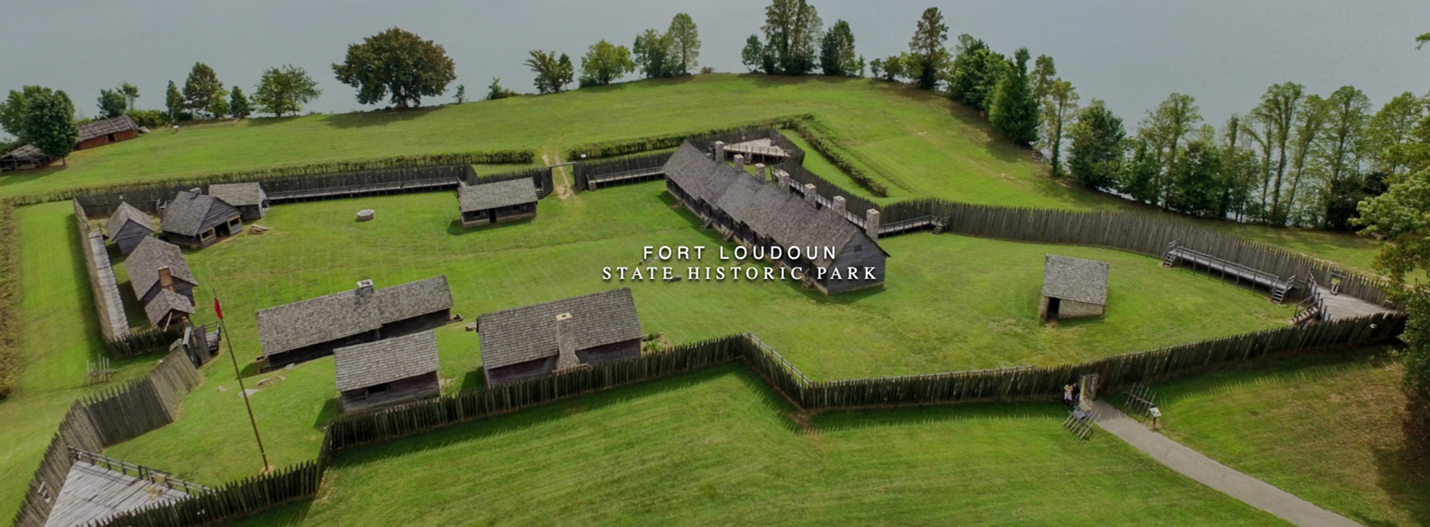 |
Reconstructed Fort Loudoun in Tennessee, (https://tnstateparks.com/parks/info/fort-loudoun) |
After the F&I War, Richard Bailey settled in Chesterfield Co. VA., then he moved to Bedford Co. VA. Around this time he married Anne Belcher and started his family.
During the Revolutionary War, Richard Bailey moved his family to Tazewell County VA. There he built a settlers’ fort with his friend, John Davidson. On the frontier, the western front of the Revolution was dominated by brutal guerrilla-style warfare between settlers and Native Americans backed by British money and supplies. On both sides, everyone was a target and there was no distinction between a civilian and a soldier or warrior. Settlers’ forts were an important element of protection. They were privately owned structures built by families to protect themselves against Native American attack, comprising a log cabin (or several) surrounded by the strongest stockade fence they could build. Often a group of farmers living near each other would team up and share a settlers’ fort, placing it in a central and accessible location near a freshwater stream, and naming the fort after the landowner on whose property the fort was constructed. The forest around the fort was usually cleared away to prevent attackers from concealing themselves in the trees. Farmers created a system whereby some would work in the fields, always keeping their weapons nearby, while others would guard all sides and act as lookouts. At any sign of danger, the sentinel would sound an alarm and everyone would run to the fortification to “fort up.” Sometimes the military would make use of these settlers’ forts as outposts, as they did with the Davidson-Bailey fort.
Richard Bailey’s patriotic service in building the Davidson-Bailey Fort is recognized by the Sons of the American Revolution. While the stockade and other buildings are long gone, one log structure of the fort is still standing and is a historical site in Bluefield VA. Below are pictures of Ellis Bailey and his grand-dog, Bailey, at the “Bailey Log House,” the remains of the Davidson-Bailey Fort.
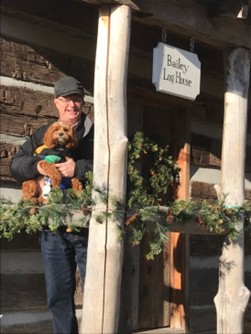 |
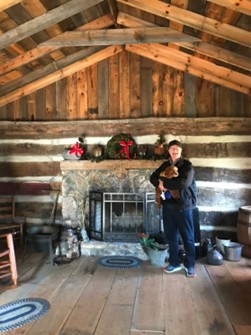 |
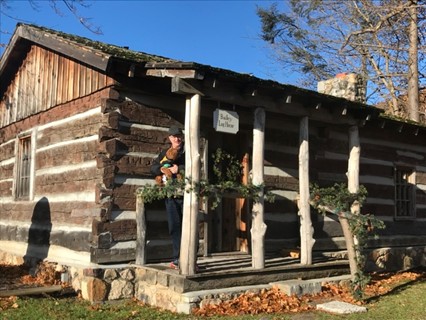 |
|
| Ellis Bailey at the Bailey Log House in Bluefield VA, photos by Bobbi Bailey | |
Near the building is a large boulder which is said to have been used to block the door of the fort for additional security. A DAR plaque was attached to the boulder in 1937.
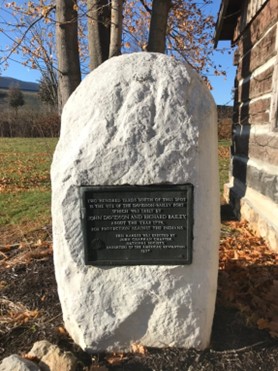 |
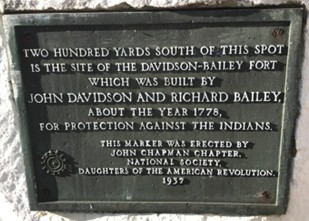 |
Boulder that is said to have held the door of the Davidson-Bailey Fort, photos by Bobbi Bailey |
|
In his pension testimony, Joseph Davidson referred to his service as a “spy” (i.e., scout or ranger) together with Richard Bailey during the Revolution, operating out of the Davidson-Bailey Fort. He said:
In each of the years aforesaid there was a company of men sent out from the Eastern part of Montgomery County to the assistance of their Settlement owing to the scarcity of men in the Settlement at that time they were not able to defend themselves that a part of the company was stationed at Davidsons Fort. That during the whole of the aforesaid Periods he was stationed with an embodied [illegible]. That the nature of his services was to guard the Fort and go out occasionally on Spying excursions that his companion in this service was Richard Bailey that they generally went from Davidson Fort across Blue Stone River and from thence Round the dividing Ridge between the Watters of Blue Stone and those of the Guyann (n.b.: should be Guyandotte) and from thence round by the head of Blue Stone River to Davidsons Fort.
The SAR also credits Richard Bailey with civil service as a Road Viewer.
Even after the Revolution was over and the Treaty of Paris was signed, the fighting did not stop on the western front. Devastating raids between settlers and Native Americans continued on both sides, and the risks were real. One of the Davidson family, Mrs. Andrew Davidson, was captured by Shawnee-Mingo warriors and bound to a tree overnight. The next day she gave birth, and the baby was drowned. She was sold as a servant to a French farmer in Canada near present day Detroit, brought home only after the Native Americans were conquered at the Battle of Fallen Timbers in 1794.
Richard and Anne Bailey had eight sons: John, James, Eli, Micajah, Archibald, Reuben, Richard, and Henry. They also had two daughters, names unknown. He was a smart businessman and accumulated hundreds of acres of land in his lifetime, much of it in the East River Mountain valley, in what is now Bluefield WV. Many generations later, Bluefield WV was the boyhood home of Ellis Bailey.
Richard Bailey died in 1818 and is buried in a small family cemetery in Bluefield VA.
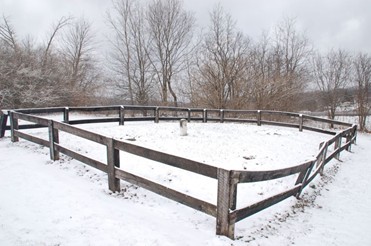 |
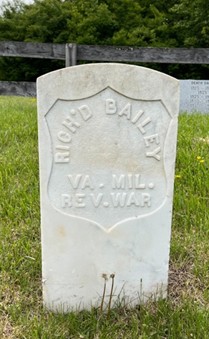 |
FindaGrave Memorials #254415691 and #8213608 |
|


